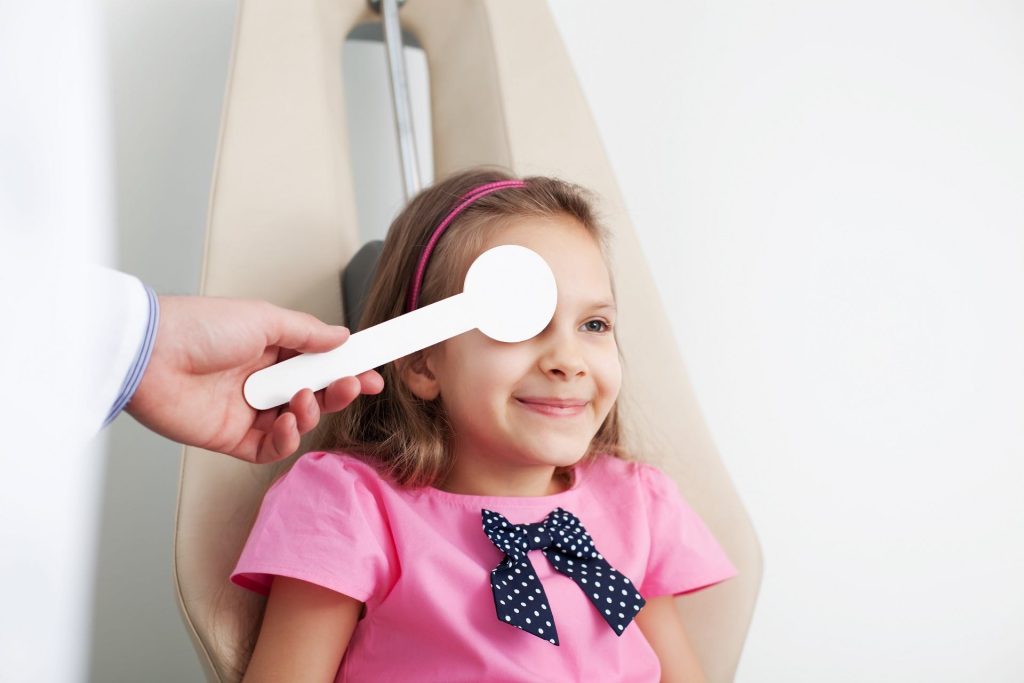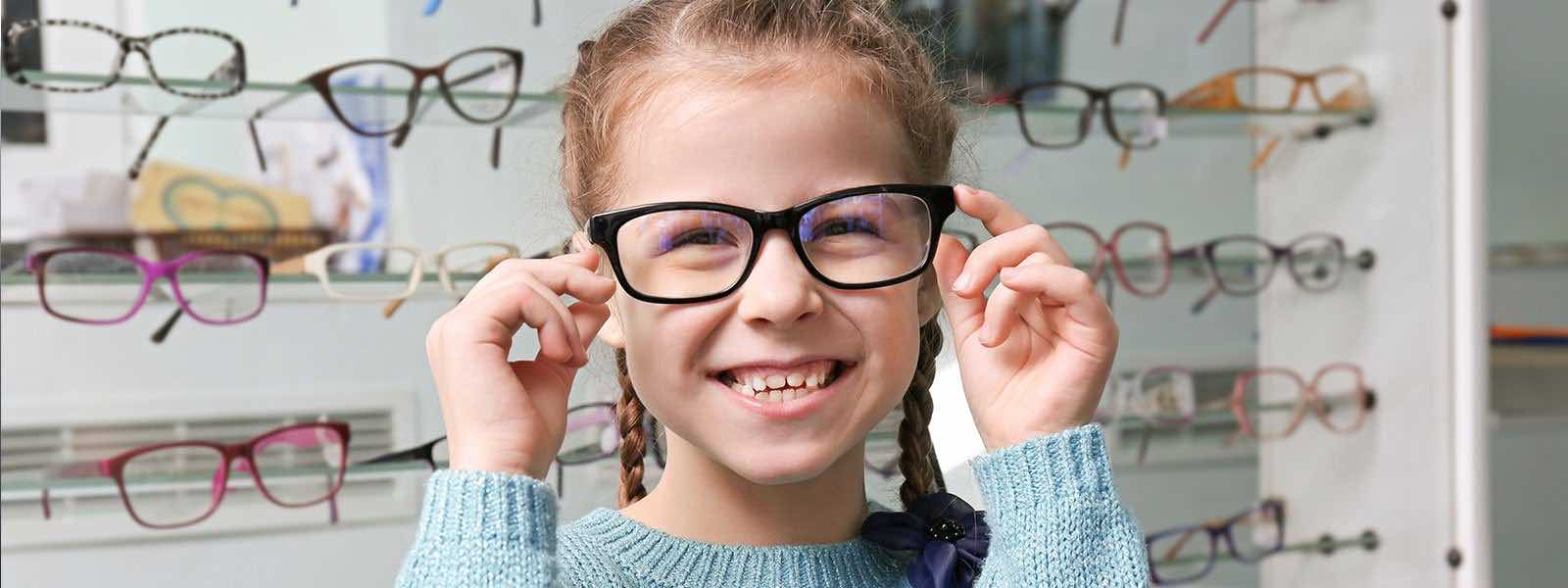What’s Lazy Eye?
Amblyopia – better known as lazy eye – is a major cause of impaired vision in childhood. Lazy eye is the abnormal vision development in an eye, resulting in reduced visual acuity. Most patients are afflicted with it in infancy or childhood, before 6 years of age.
The best chance your child has at correcting amblyopia is detecting and treating it early. By the time a child is in elementary school, lazy eye treatment usually takes longer and is less effective.
Part of a routine pediatric eye exam will include screening for amblyopia which is yet another reason why it is so important to follow the recommended pediatric eye exam schedule, starting when your child is 6 months old.
When to See an Eye Doctor
Newborns are born with terrible eyesight, only seeing about a foot away, which is just far enough to make out whoever is holding them. As a baby grows, their eyesight sharpens and the visual pathways connecting the eyes to the brain matures.
A baby’s ability to develop clear vision can only happen if each eye sends sharp images to the brain. In some children, each eye sends a substantially different image to the brain. The difference between these two images may not be rectified in the brain’s processing center and the two images cannot be merged into a single clear image.
Over time, the brain may suppress the blurrier images sent by one eye. A cycle then ensures that the less stable and suppressed eye becomes weaker and weaker, leading to lazy eye.
Most patients will have a lazy eye by the time their normal 20/20 vision would have fully developed, or about 6 years old.
Parents should be on the lookout for the following lazy eyes symptoms in their kids:
- Crossed eyes
- An eye that wanders up, down, in or out
- Eyes that do not appear to work together
- A drooping eyelid
- Poor depth perception
- Favoring one side of approach
- Shutting or squinting an eye
- Tilting the head
Even when vigilant for the signs of amblyopia, it’s not easy to recognize that your child has it. Obvious external vision abnormalities, like misaligned or crossed eyes, do not always co-exist with lazy eye. Without an outward clue, it can be extremely difficult to tell that something is off with your child’s sight. What’s more, children themselves often do not realize they have a weak eye since the condition usually develops as visual acuity matures.
Importance of Early Treatment
Children who are otherwise perfectly healthy can develop lazy eye. Some major triggers for condition are:
- Strabismus – eye misalignment is the most common cause of amblyopia. In this condition, one eye will not work in tandem with the other eye. It may wander occasionally or constantly and the difference in the angle from the normal eye may be small or large. Since the eyes are not focusing on the same point, double vision can arise. If this persists for a while, sometimes only a few weeks, the brain will suppress the images from the wandering eye to avoid double vision, resulting in strabismic amblyopia.
- Anisometropia – this is when one eye is significantly more farsighted, nearsighted, or astigmatic than the other eye. The difference in the refractive error between the eyes means they cannot focus equally at the same time. What then happens is that the weaker eye is used less, inhibiting normal vision development, and leading to amblyopia. Refractive amblyopia can be the most difficult to diagnose since there are no outward signs of the visual imbalance.
- Disruption of the visual system – any disorder that prevents images from clearly focusing on the retina can lead to disruptive amblyopia. Cataracts are one of the more common causes of this form of lazy eye. Droopy eyelids and eyelid tumors can also facilitate the condition.

Treatments for Lazy Eye
The principle to treating a lazy eye is simple: strengthen the weaker eye by using it more.
Before this can happen, any abnormalities of the weaker eye, like refractive error or visual blockages, will need to be addressed. In some cases of refractive amblyopia, successful treatment may only include corrective eyewear to treat the astigmatism.
To improve the function and vision in the weaker eye, one of the two following techniques may be used:
- Patching – your eye doctor may advise that your child wear an opaque patch over their stronger eye part time or all the time. In this way, the weaker eye is used more, stimulating vision in it and the part of the brain that processes vision. Patching may be done for weeks to months.
- Atropine – this is a type of medication that is delivered via an eye drop into the stronger eye. The drug temporarily blurs the vision in the stronger eye, forcing the patient to rely on the weaker eye. This therapy is usually reserved for young patients who will not wear a patch, or when there is another problem with patient compliance for patching treatment.
The rule of thumb in treating amblyopia is that the younger the patient is when therapy starts, the greater the chance of gaining normal visual acuity. The type and severity of the condition, as well as the child’s compliance with treatment, will also factor into treatment success.
Most patients will benefit from treatment. Some patients may go so far as to enjoy 20/20 vision, while others may shore up the weaker eye and improve vision.
Contact SightMD today to schedule an appointment with one of our doctors to discuss your child’s vision health at one of our convenient locations!

How Often Should My Child Have Eye Exams?
Ensuring your child’s eye health is vital for their overall well-being and development. Healthy vision significantly influences a child’s…

How to Prepare Your Eyes for the Colder Months
As temperatures decrease and the air grows drier, the colder months can significantly affect your eye health. To take…

Why Fall is the Ideal Season to Enhance Your Vision Before the Holidays with Cataract Surgery
Fall is a season of preparation—preparing for colder weather, the end of the year, and the approaching holidays. It’s…